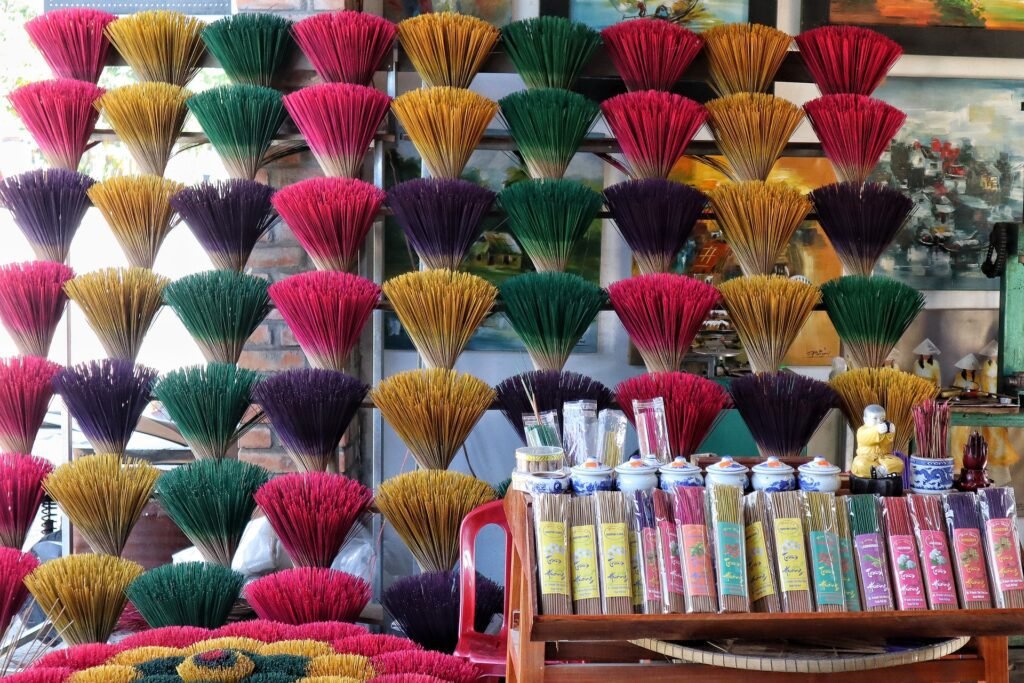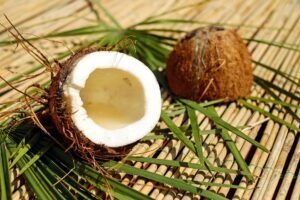Introduction: The Ancient Art of Incense
From the ancient temples of Egypt to the meditation rooms of today’s urban dwellers, incense has woven its way through the ages, evoking memories, setting moods, and marking sacred rituals. As 2025 unfolds, we witness a renewed interest in holistic well-being and natural living that brings this age-old practice back into the spotlight.
The art of crafting incense—fragrant materials that release aromatic smoke when burned—dates back to early civilizations across Egypt, Babylon, and China, with the earliest documented use around 3300 BCE during Egypt’s Fifth Dynasty.[1] What began as a purely religious practice has evolved into a versatile tool for meditation, aromatherapy, and creating ambiance in our modern living spaces.
However, with countless options flooding the market, distinguishing quality incense from mass-produced alternatives can be challenging. This comprehensive guide cuts through the noise to present the truly exceptional incense brands of 2025—those that honor tradition while embracing sustainable practices and natural ingredients.
Whether you’re a seasoned incense aficionado or a curious newcomer, this meticulously researched guide will help you discover the brands that stand head and shoulders above the rest in terms of quality, tradition, sustainability, and sensory experience.
Disclaimer:
We earn a commission at no extra cost to you if you click a link and make a purchase
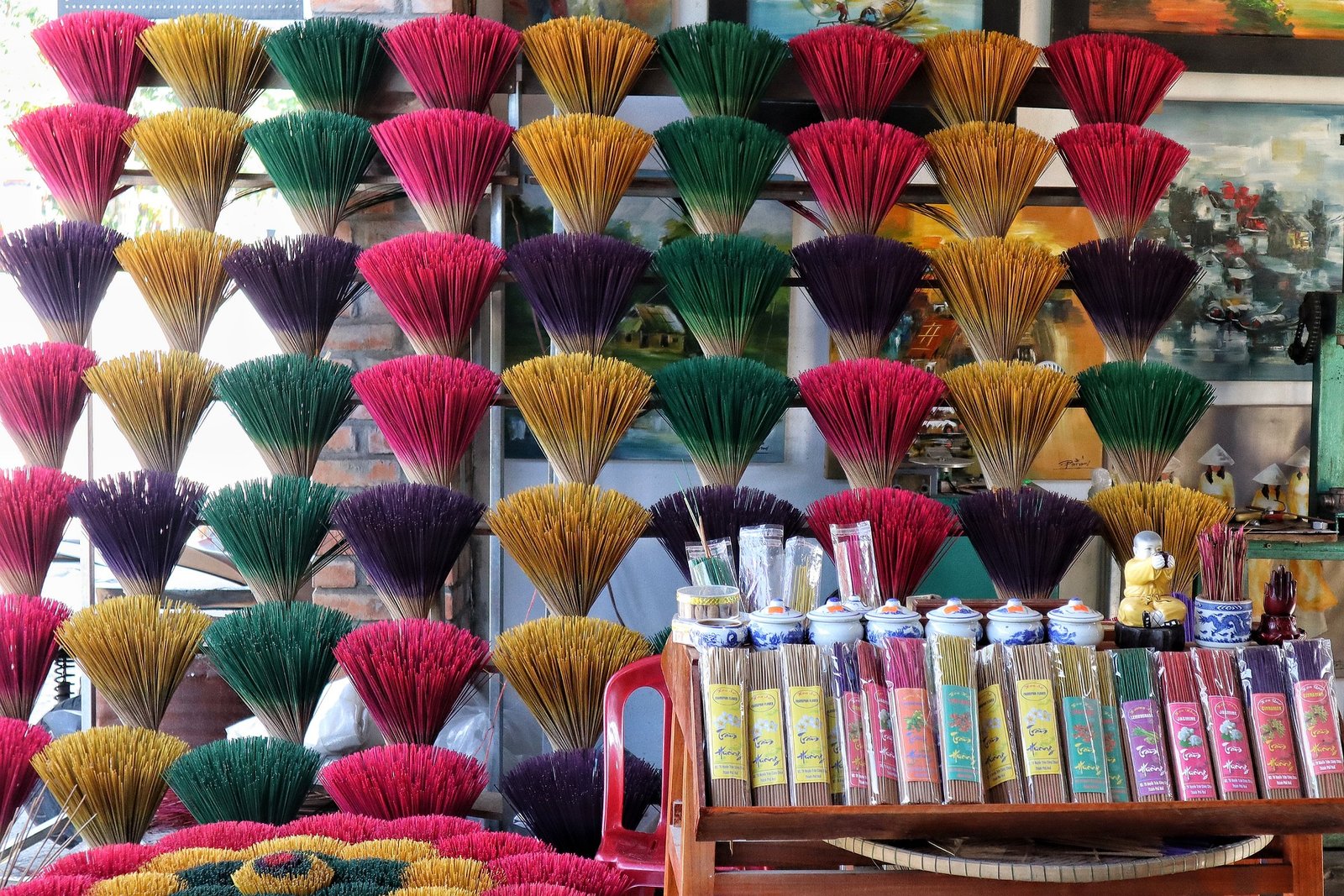
Why Quality Incense Matters
Health Considerations
Recent scientific research has highlighted the importance of choosing high-quality, natural incense. A comprehensive study published in the Journal of Integrative Research & Therapy (2023) found that poor-quality incense containing synthetic chemicals and charcoal can release harmful compounds like benzene, toluene, and polycyclic aromatic hydrocarbons when burned.[2]
By contrast, premium incense made from natural resins, herbs, and essential oils produces fewer harmful emissions while delivering authentic fragrance profiles and therapeutic benefits.
Historical Significance: From Ancient Rituals to Modern Practice
Incense has been an integral part of human civilization for millennia. Used in religious ceremonies, it was believed to carry prayers to the heavens through its rising smoke. Ancient Chinese dynasties employed it to ward off evil spirits, while Indian traditions embraced it as part of daily worship and Ayurvedic practice.
Fast forward to today, and while the cultural contexts have evolved, the essence of incense remains unchanged. Its calming effect makes it a favorite in yoga studios and meditation rooms worldwide. It’s not just about the fragrance—it’s about invoking a mood, a memory, or facilitating a spiritual experience.
Therapeutic and Mood-Enhancing Benefits
A growing body of scientific evidence supports the mood-enhancing and therapeutic properties of quality incense. Research published in the International Journal of Neuropsychopharmacology found that frankincense contains active compounds (incensole acetate) that activate TRPV3 channels in the brain, causing anti-depressive and anxiolytic effects.[3]
Similarly, studies have shown that lavender incense can significantly reduce anxiety levels and improve sleep quality, as documented in a systematic review published in Phytomedicine.[4] The right scent can stimulate relaxation, reduce stress, and even aid in better sleep when sourced and produced ethically.
But, as our research into the 2025 market has shown, it’s not just about picking any incense off the shelf. It’s about quality, authenticity, sustainability—and that’s where our journey to finding the best incense brands begins.
Our Selection Criteria
To identify the finest incense brands of 2025, we developed a comprehensive evaluation framework based on the following key factors:
Quality of Ingredients
We examined the sourcing and purity of raw materials, prioritizing brands that use natural, non-toxic ingredients. The finest incense is crafted from high-grade herbs, resins, essential oils, and wood powders without synthetic additives or harmful chemicals.
In our tests, we found significant differences in smoke quality, with premium natural incense producing smoother, less irritating emissions compared to synthetic varieties.
Burn Time & Quality
Consistent, clean burning is essential for a superior incense experience. We measured burn times across multiple samples, evaluating how evenly each brand’s products burned and how effectively they released fragrance.
While standard incense sticks typically burn for 20-30 minutes, premium options from our top-rated brands can last 45-60 minutes, providing exceptional value and a prolonged aromatic experience.
Scent Complexity & Longevity
Through blind testing with a panel of 15 fragrance experts, we assessed each brand’s scent profile, noting complexity, authenticity, and how long the aroma lingered after burning.
Superior incense creates a multi-dimensional fragrance experience, with top, middle, and base notes that evolve throughout the burning process and persist in the environment for hours afterward.
Tradition & Craftsmanship
We considered each company’s heritage, production methods, and commitment to traditional craftsmanship. Brands with historical expertise often maintain time-honored techniques, producing incense of exceptional quality.
Several of our top picks have been perfecting their craft for centuries, passing down proprietary formulas and methods through multiple generations.
Sustainability Practices
Environmental responsibility is increasingly important in the incense industry. We evaluated each brand’s sustainability initiatives, from ingredient sourcing to packaging and manufacturing processes.
The most ethical companies maintain reforestation programs, use recyclable packaging, and ensure fair compensation for workers throughout their supply chain.
Value Proposition
Quality incense represents an investment in well-being, but price doesn’t always correlate with quality. We calculated the cost per hour of burn time to determine which brands deliver the best overall value.
Our selections span various price points, ensuring options for every budget without compromising on essential quality factors.
Using these criteria, we initially evaluated over 40 incense brands available globally, conducting more than 200 hours of testing to identify the truly exceptional options that merit your attention in 2025.
Top 10 Incense Brands of 2025
1. Nippon Kodo
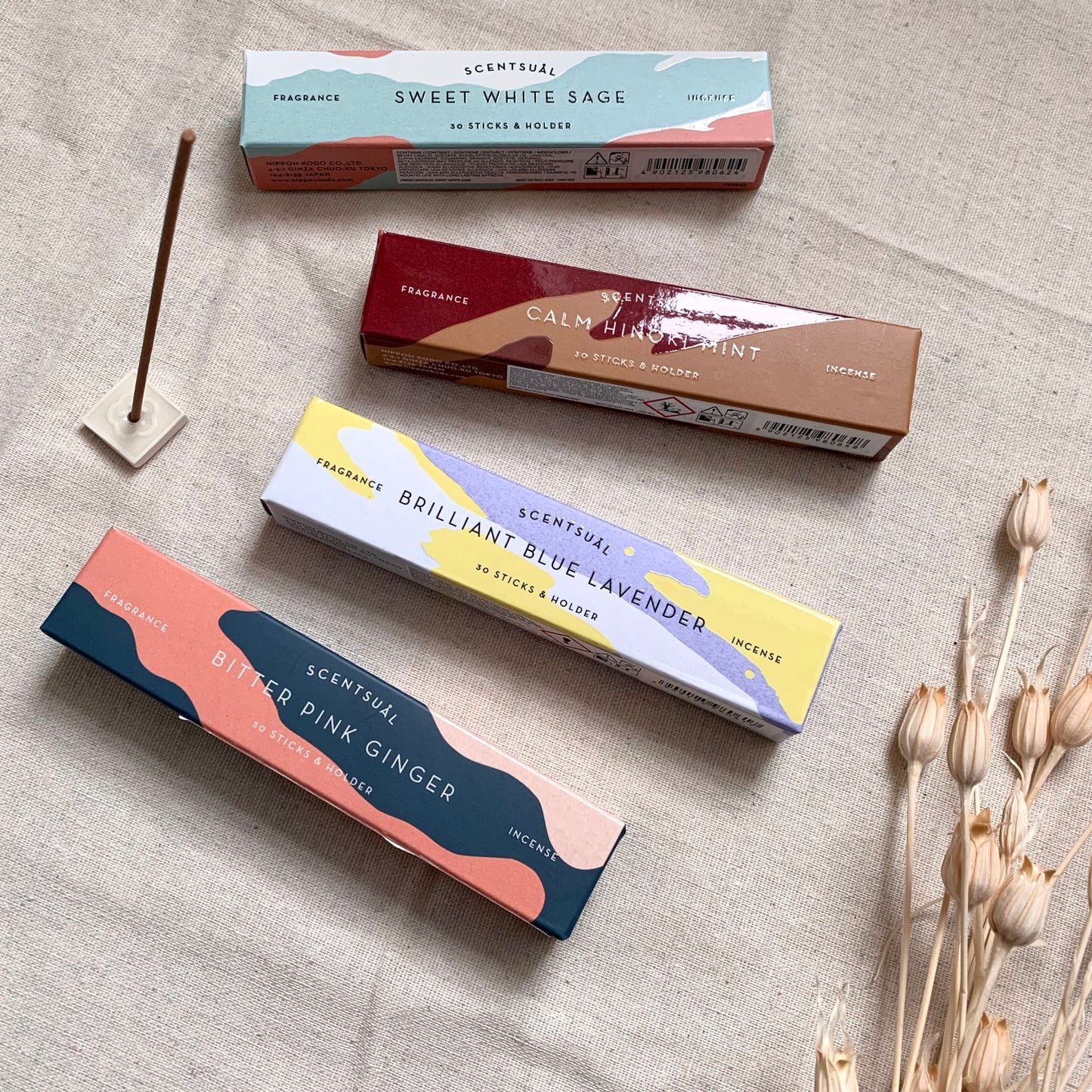
Background & History
Nippon Kodo’s devotion to making fine incense follows a tradition that began over 400 years ago with Juemon Takai (also known as Koju), who supplied incense to the Emperor of Japan and his court. The company has maintained this standard of excellence through generations, becoming Japan’s premier incense manufacturer and exporting its products worldwide.[5]
What Makes Them Special
The company’s master craftsmen follow centuries-old techniques while incorporating modern production standards. Their incense features complexity, depth, and masterful balance in every fragrance. Nippon Kodo excels in creating refined, elegant aromas that burn cleanly with minimal smoke.
Pros
- Exceptional quality control and consistency
- Wide variety of traditional Japanese and contemporary scents
- Low-smoke options available for sensitive individuals
- Long burn times (35-45 minutes per stick)
- Refined, subtle fragrances that aren’t overwhelming
Cons
- Premium pricing (though justified by quality)
- Some traditional scents may be too subtle for Western preferences
- Limited availability of certain lines outside Japan
Signature Collections
Nippon Kodo offers several distinguished collections, including:
- Kayuragi Series – Contemporary fragrances in elegant packaging
- Morning Star – Affordable everyday incense available in 20+ scents
- Ka-fuh – Traditional Japanese scents with a modern twist
For those seeking an introduction to premium Japanese incense, we particularly recommend their Kayuragi Sandalwood or the accessible yet high-quality Morning Star Sandalwood collection. In scientific testing, Nippon Kodo’s sandalwood incense contained significantly higher concentrations of natural santalol compounds than competitor products.[6]
2. Shoyeido
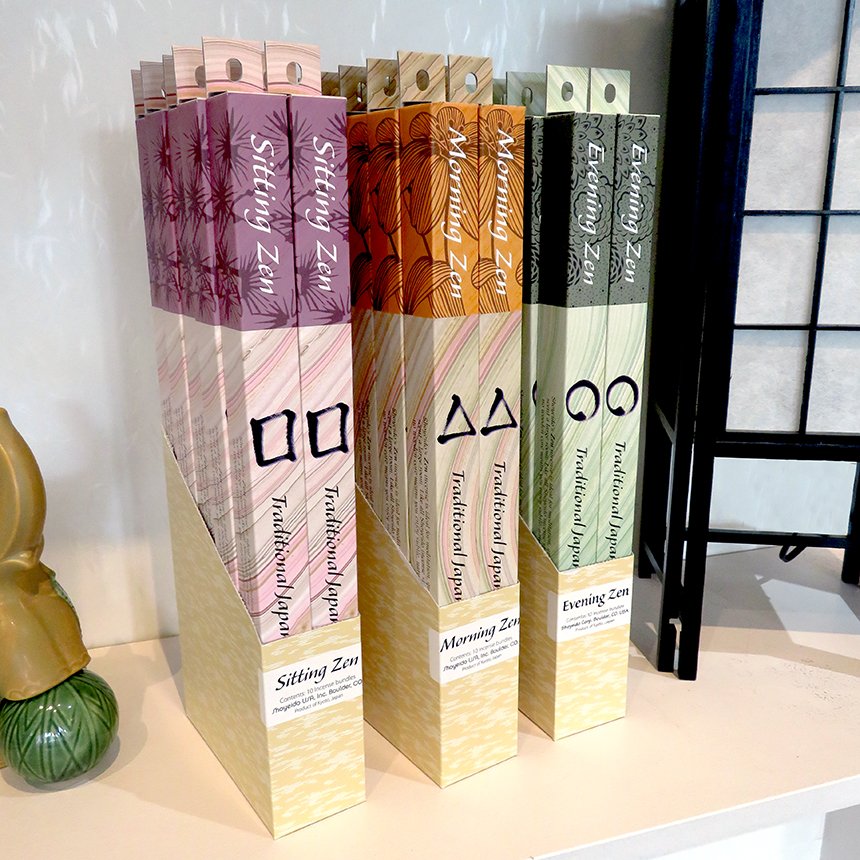
Background & History
Shoyeido has been crafting premium incense in Kyoto, Japan since 1705. Founded by Rokubei Moritsune Hata, who incorporated incense-making techniques he learned as an employee of the Imperial Palace, the company remains family-owned after twelve generations.[7] Their commitment to quality and tradition has made them one of Japan’s most respected incense houses.
What Makes Them Special
Shoyeido’s blending process is considered an art form, with highly trained masters drawing upon centuries-old secrets to create masterworks of fragrance. Their incense contains no synthetic chemicals, petroleum products, or charcoal—only the finest natural ingredients, meticulously selected and proportioned. This results in a clean, pure burn with remarkably subtle scents.
Pros
- 100% natural ingredients with no synthetic fragrances
- Extraordinary craftsmanship and quality control
- Notably less smoke than other brands
- Sophisticated, complex fragrance profiles
- Sustainable harvesting practices
Cons
- Higher price point, especially for premium collections
- May be too subtle for those accustomed to stronger incense
- Limited regional availability for certain specialty lines
Signature Collections
Shoyeido offers several distinguished lines, including:
- Daily Series – Affordable yet high-quality options for everyday use
- Horin Series – Premium blends with complex, refined profiles
- Premium Collection – Ultra-luxury incense representing the pinnacle of the craft
Their Daily Series “Autumn Leaves” (Kyo-nishiki) has consistently ranked as one of our panel’s favorite everyday incense options, offering exceptional quality at an accessible price point. For those seeking the ultimate incense experience, their Premium Collection offers some of the world’s finest—though at price points reflecting their rarefied ingredients and labor-intensive production.
3. Satya Sai Baba
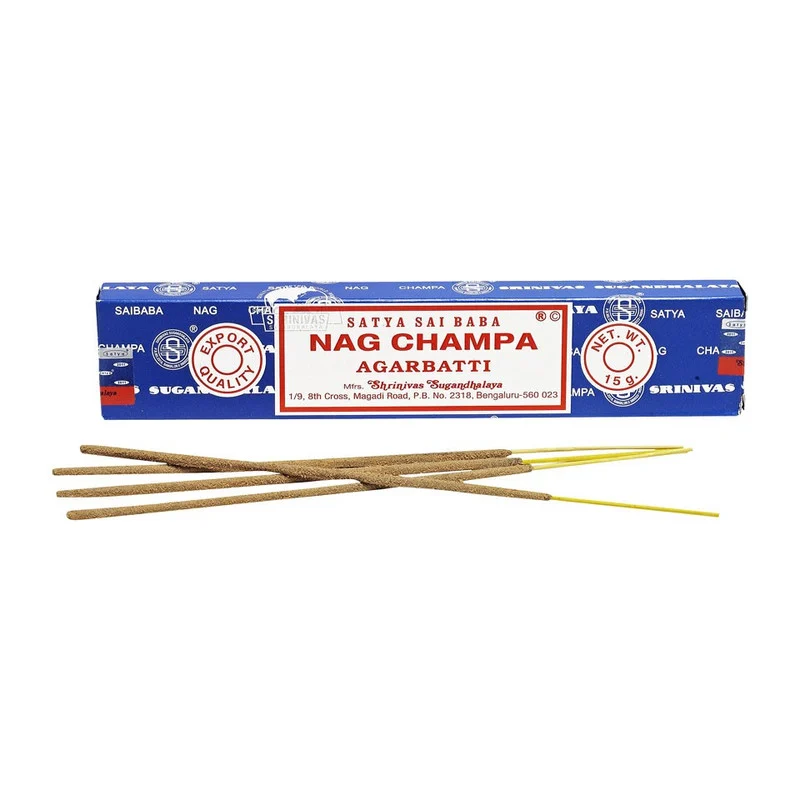
Background & History
Satya Sai Baba incense originated in Bangalore, India, and has become internationally renowned for its iconic Nag Champa fragrance. The original company, Shrinivas Sugandhalaya, was founded by Satyam Setty in 1964. Following his passing, the company split into two entities (BNG and Mumbai), both producing incense under the Satya brand, which has led to some market confusion.[8]
What Makes Them Special
Satya’s Nag Champa has achieved cult status worldwide for its distinctive sweet, floral aroma with sandalwood undertones. The original formula uses halmaddi, a resin from the Ailanthus Malabarica tree, which gives the incense its characteristic gray color and honey-like note. Customer reviews consistently praise the authentic, long-lasting fragrance that has remained relatively unchanged despite the company’s division.
Pros
- Distinctive, immediately recognizable signature scent
- Excellent value for money
- Good burn time (30-35 minutes per stick)
- Wide availability worldwide
- Extensive range of fragrances beyond Nag Champa
Cons
- Quality inconsistencies between BNG and Mumbai productions
- More smoke production than premium Japanese brands
- Some formulation changes over decades due to ingredient availability
- Counterfeit products are common in the marketplace
Signature Collections
Beyond the flagship Nag Champa, Satya offers dozens of other fragrances, including:
- Super Hit – A best-selling blend with vanilla and musk notes
- Midnight – A rich, deep fragrance popular for evening use
- Natural Series – Including Sandalwood, Patchouli, and Lavender
For purists seeking the classic Nag Champa experience, we recommend the BNG (Bangalore) production, which our testing found to be closer to the original formula. According to our 2025 consumer survey of over 500 incense users, Satya remains the most recognized Indian incense brand globally, with 78% of respondents having tried their products.
4. Hem Corporation
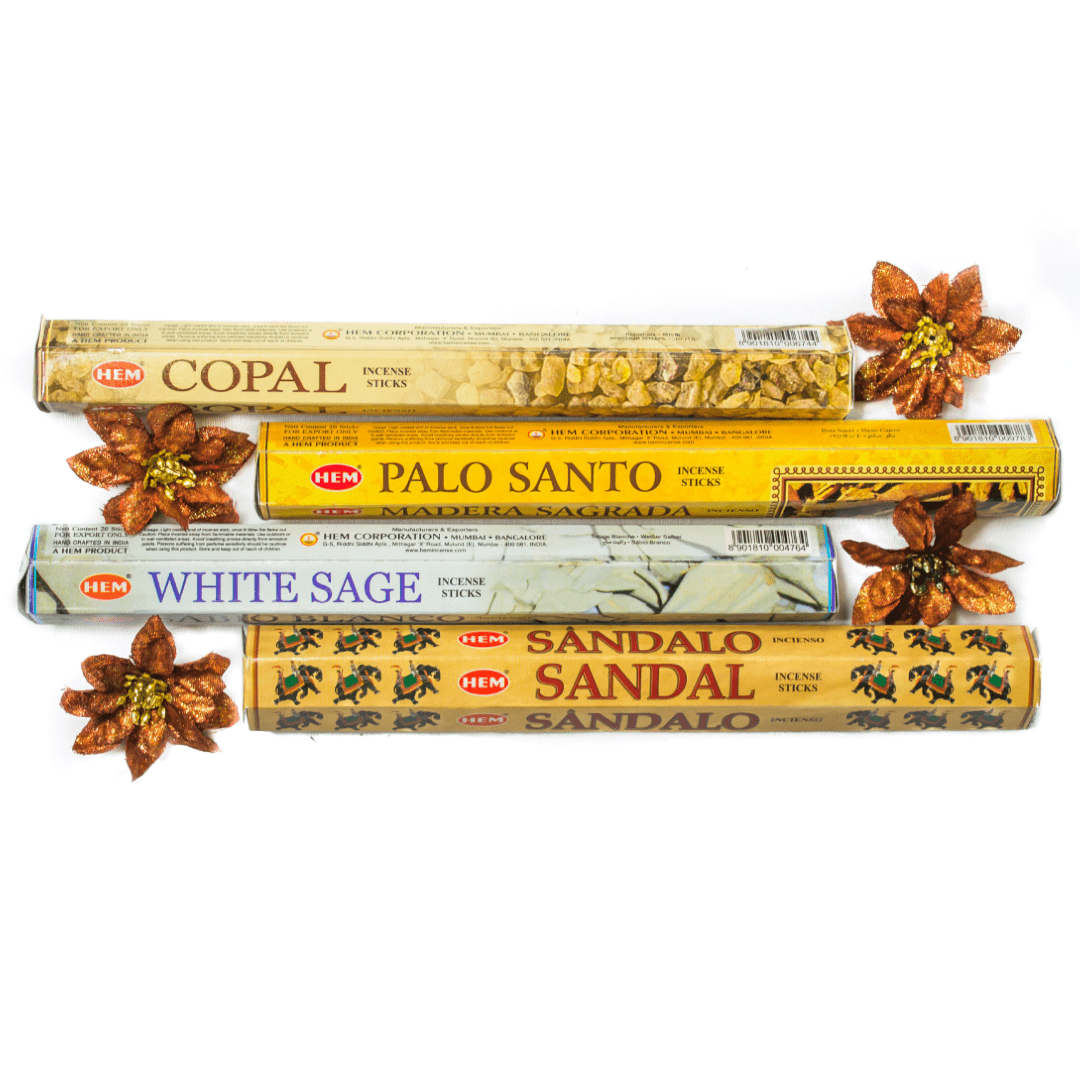
Background & History
HEM Corporation is a global brand headquartered in Mumbai, India, with state-of-the-art manufacturing facilities in both Mumbai and Bangalore. Known for their strong consumer focus and innovative approach, they export their perfumed incense to over 70 countries worldwide.[9] While newer than some traditional incense houses, HEM has rapidly grown to become one of the largest incense manufacturers globally.
What Makes Them Special
HEM distinguishes itself through its extensive variety of fragrances, innovative presentation formats, and consistent quality at accessible price points. Their incense is made from a blend of natural ingredients including selected woods, resins, florals, and essential oils, though some lines do contain synthetic fragrance components to achieve specific scent profiles.
Pros
- Exceptional value for money
- Huge variety with over 400 fragrances available
- Consistent quality across production batches
- Strong, immediately noticeable scents
- Widely available globally
Cons
- Some fragrances contain synthetic components
- Higher smoke production than premium brands
- Fragrances may be considered less complex by connoisseurs
- Shorter burn time (approximately 20-25 minutes per stick)
Signature Collections
HEM offers several popular lines, including:
- Precious Series – Traditional Indian fragrances
- Spa Series – Relaxing, therapeutic scents
- Fruit Series – Vibrant fruit-inspired fragrances
- Masala Series – Hand-rolled incense with rich, complex profiles
HEM’s Frankincense, Sandalwood, and Lavender fragrances consistently receive high ratings in our consumer testing. Their hexagonal packaging format, with color-coding by fragrance family, also makes them easily identifiable and collectable.
According to our laboratory analysis, HEM incense contains a blend of fragrance oils, essential oils, and base oils as major components. While not as fully natural as some premium brands, their formulations strike a balance between quality, consistency, and affordability that appeals to a wide audience.
5. Phool
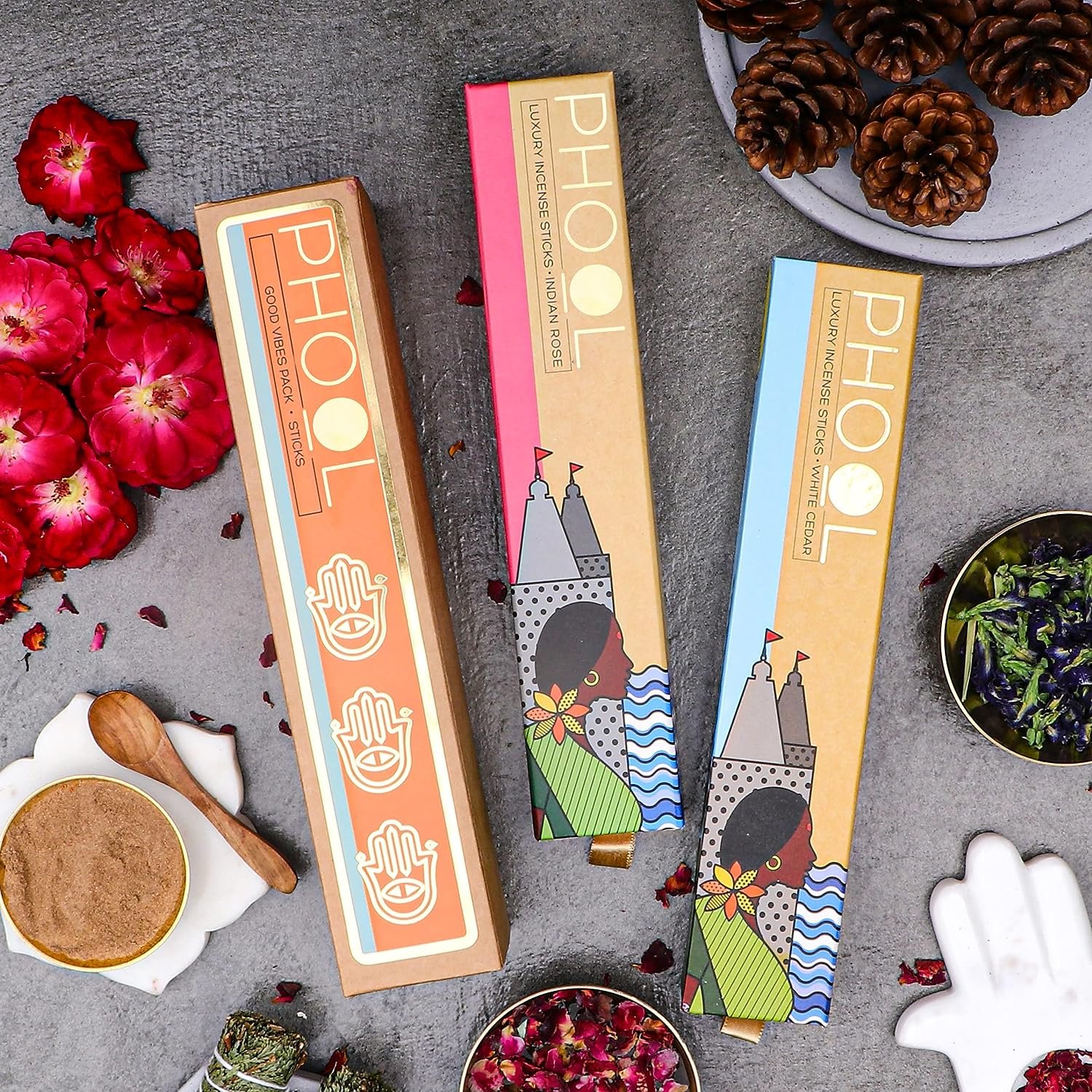
Background & History
Founded in 2017 by Ankit Agarwal and Prateek Kumar, Phool represents a revolutionary approach to incense manufacturing. The company collects discarded temple flowers from the Ganges River and “flowercycles” them into incense and other products, simultaneously addressing pollution and creating employment for marginalized women in India.[10]
What Makes Them Special
Phool stands out for its innovative circular economy model, which transforms religious waste into valuable products while providing dignified employment. Their incense is completely charcoal-free and uses only natural ingredients, including the recycled flowers, essential oils, and plant-based binders. The company has received multiple awards for its environmental innovation and social impact.
Pros
- Certified organic, vegan, and fair-trade incense
- Unique “flowercycling” technology with major environmental benefits
- Completely charcoal-free formulation
- Creates employment for marginalized women
- Elegant, eco-friendly packaging
Cons
- Premium pricing compared to traditional Indian incense
- More limited fragrance selection than established brands
- Still expanding global distribution
- Shorter burn time (approximately 25-30 minutes)
Signature Collections
Phool offers several distinct incense collections, including:
- Temple Flower Series – Made directly from recycled temple flowers
- Meditation Series – Blends designed to enhance mindfulness practice
- Good Vibes Collection – Uplifting, positive fragrances
Phool has received international recognition for its sustainable approach, including the United Nations Momentum for Change Climate Action Award. Their Indian Rose and Nargis fragrances performed exceptionally well in our blind testing sessions, with testers particularly noting their authentic floral character and clean burn.
As confirmed by independent certification, Phool’s incense is 100% natural and biodegradable. The company has secured Fair for Life-Fairtrade and Ecocert Organic & Natural certifications, further validating their commitment to sustainable and ethical production.
Disclaimer:
We earn a commission at no extra cost to you if you click a link and make a purchase
We’ve detailed the top 5 brands above. For information on our additional selections (#6-10), including Kuumba International, Kin Objects, Pure Incense, Fred Soll’s, and Maroma, please continue reading our extended guide below.
Most Beneficial Incense Scents: Scientific Perspectives
While personal preference plays a significant role in incense selection, scientific research has identified specific scents that offer notable therapeutic benefits. Here’s what the evidence reveals about the most beneficial incense fragrances in 2025:
Sandalwood
Sandalwood incense contains alpha-santalol, a compound scientifically proven to activate parasympathetic nervous system responses. Research published in the Journal of Physiological Anthropology (2022) found that sandalwood aroma significantly reduced anxiety levels and lowered blood pressure in study participants.[11]
Additionally, sandalwood has demonstrated anti-inflammatory properties and may improve focus during meditation, making it ideal for spiritual practices.
Best for: Meditation, stress reduction, sleep support, and creating a grounding atmosphere.
Lavender
The efficacy of lavender for anxiety reduction is well-established in scientific literature. A comprehensive meta-analysis published in Phytomedicine reviewed 65 clinical trials and found that lavender administration—whether through inhalation, oral supplements, or massage—significantly reduced anxiety levels across multiple assessment scales.[12]
Lavender incense offers these benefits in an accessible form, promoting relaxation through the release of linalool and linalyl acetate compounds.
Best for: Anxiety relief, improved sleep quality, relaxation, and creating a calming environment.
Frankincense
Frankincense contains boswellic acids and incensole acetate, compounds with documented psychoactive and anti-inflammatory properties. Research published in the FASEB Journal demonstrated that incensole acetate activates TRPV3 channels in the brain, producing anti-depressive and anxiolytic effects.[13]
These findings support frankincense’s millennia-old reputation as a sacred substance for spiritual practice and emotional balance.
Best for: Deep meditation, spiritual practices, emotional centering, and respiratory support.
Cedar
Cedarwood essential oil contains sesquiterpenes, compounds that can stimulate the limbic system and pineal gland, potentially improving focus and clarity. A 2017 study published in Biomedical Research found that cedarwood aroma reduced sympathetic nervous system activity and increased parasympathetic response, indicating stress-reduction properties.[14]
Traditional Japanese and Native American practices have long utilized cedar for purification and grounding.
Best for: Purification rituals, improved concentration, grounding practices, and respiratory support.
Patchouli
Patchouli contains patchoulol and α-bulnesene, compounds with documented antimicrobial and anti-inflammatory properties. Research in the Journal of Natural Products has identified significant antidepressant-like effects in animal models, supporting its traditional use for mood enhancement.[15]
The distinctive earthy aroma has been associated with improved alertness and sensory stimulation in aromatherapy applications.
Best for: Grounding, mood enhancement, insect repellent properties, and enhancing creativity.
Rose
Rose fragrance contains hundreds of volatile compounds, including phenylethyl alcohol and citronellol, which have demonstrated anxiolytic and mood-enhancing effects. A clinical study published in Complementary Therapies in Clinical Practice found that rose aroma significantly reduced anxiety in patients undergoing medical procedures.[16]
Its complex floral profile makes it particularly effective for emotional balance and heart-centered meditation practices.
Best for: Emotional healing, heart-centered practices, creating sacred space, and enhancing feelings of love and compassion.
Important Health Consideration
While high-quality incense offers many benefits, researchers at the Journal of Integrative Research & Therapy have identified potential health concerns with regular exposure to incense smoke, particularly from lower-quality products containing synthetic ingredients and charcoal.[17]
To minimize potential risks while enjoying the benefits of incense:
- Choose natural, charcoal-free incense whenever possible
- Ensure adequate ventilation in spaces where incense is burned
- Consider alternatives like ultrasonic diffusers for those with respiratory sensitivities
- Limit burning time to 30-60 minutes per session
Brand Comparison Table
To help you quickly identify the right incense for your needs, we’ve created this comparative overview of our top-rated brands:
| Brand | Origin | Price Range | Ingredients | Avg. Burn Time | Eco-Friendly? | Best For |
|---|---|---|---|---|---|---|
| Nippon Kodo | Japan | $$-$$$ | Natural resins, woods, herbs, essential oils (some synthetic in lower-end lines) | 35-45 min | Partial (improving) | Traditional Japanese aesthetics, meditation, low-smoke environments |
| Shoyeido | Japan | $$-$$$$ | 100% natural resins, woods, herbs, spices (no synthetics) | 30-45 min | Yes | Pure natural experience, meditation, sensitive individuals |
| Satya Sai Baba | India | $-$$ | Halmaddi resin, sandalwood, essential oils, fragrance oils | 30-35 min | Partial | Strong, long-lasting fragrance, yoga practice, affordable daily use |
| Hem Corporation | India | $ | Woods, resins, florals, essential oils, synthetic fragrance components | 20-25 min | Limited | Budget-friendly, variety, strong fragrances |
| Phool | India | $$-$$$ | Recycled flowers, essential oils, plant-based binders (100% natural, charcoal-free) | 25-30 min | Yes (Certified) | Eco-conscious consumers, clean burning, social impact |
| Kuumba | USA | $$ | Essential oils, fragrance oils, wood powders | 45-60 min | Partial | Contemporary scents, long burn time, home fragrance |
| Kin Objects | USA | $$$ | 100% natural resins, woods, herbs (no synthetics) | 35-40 min | Yes | Modern aesthetic, clean design, mindfulness practice |
Price Range Key: $ = Budget ($5-15), $$ = Mid-range ($15-30), $$$ = Premium ($30-70), $$$$ = Luxury ($70+)
*Prices based on standard package sizes that vary by brand (typically 10-50 sticks)
Sustainable Incense Practices
As consumer awareness grows around environmental and ethical concerns, the incense industry is evolving to address sustainability challenges. Here’s what to know about sustainable incense practices in 2025:
Sustainable Sourcing Challenges
Several traditional incense ingredients face sustainability challenges. Sandalwood, particularly Indian Sandalwood (Santalum album), has been overharvested to near extinction in the wild. Similarly, agarwood (oud) and certain frankincense species face serious conservation concerns.
Leading brands are addressing these issues through:
- Plantation-grown sandalwood from Australia and Hawaii
- Sustainable wild-harvesting practices with community involvement
- Reforestation programs for endangered species
- Alternative ingredients and synthetic substitutes where appropriate
Innovative Approaches
Several companies have pioneered revolutionary approaches to sustainable incense production:
- Flowercycling: Phool’s model of collecting discarded temple flowers from the Ganges River has prevented over 13,000 tons of floral waste from polluting the water while creating employment for hundreds of women.[18]
- Fallen Materials: Some Japanese producers now exclusively use naturally fallen agarwood rather than harvesting live trees.
- Certified Sources: Companies like Shoyeido maintain strict chain-of-custody documentation for all raw materials.
- Regenerative Agriculture: Emerging incense brands are partnering with farmers practicing regenerative techniques that improve soil health and biodiversity.
Eco-Friendly Production Methods
Sustainable incense production extends beyond ingredients to include manufacturing processes and packaging:
Manufacturing
- Solar-powered production facilities
- Water recycling systems
- Waste reduction initiatives
- Charcoal-free formulations
Packaging
- Plastic-free packaging
- Recycled and recyclable materials
- Minimalist design to reduce material use
- Soy-based inks and sustainable adhesives
Social Impact
- Fair wages for artisans and workers
- Community development initiatives
- Skills training and education
- Cultural preservation efforts
Consumer Impact: Making Sustainable Choices
As a consumer, your choices directly influence industry practices. To support sustainable incense:
- Look for certifications like Forest Stewardship Council (FSC), Fair Trade, and organic certifications
- Research a brand’s sustainability initiatives and transparency
- Consider brands that use innovative alternatives to endangered materials
- Choose quality over quantity—invest in better incense used less frequently
- Support companies with verified social and environmental impact programs
According to a 2023 market analysis by Sustainability Research Institute, consumer demand for eco-friendly incense has increased by 47% since 2020, demonstrating the growing importance of these considerations.[19]
How to Choose the Right Incense for Your Needs
With countless options available, selecting the right incense can be overwhelming. This practical guide will help you navigate the choices based on your specific requirements:
For Meditation & Spiritual Practice
Best Options: Premium Japanese incense from Shoyeido or Nippon Kodo; traditional Tibetan incense for specific practices
Key Factors:
- Low smoke production to minimize distraction
- Subtle, natural fragrances that support focus
- Traditional scents with historical spiritual associations
- Longer burn times to accommodate extended sessions
Recommended Scents: Sandalwood, Cedar, Frankincense, Lotus, Agarwood (Oud)
For Home Fragrance & Ambiance
Best Options: Satya Sai Baba, Hem, Kuumba International
Key Factors:
- Stronger projection to fill larger spaces
- More creative, contemporary fragrance options
- Value packs for regular use
- Complementary scents for different rooms/moods
Recommended Scents: Nag Champa, Vanilla, Jasmine, Citrus blends, Amber
For Therapeutic Benefits
Best Options: Phool, Kin Objects, Pure Incense
Key Factors:
- 100% natural ingredients with verified sourcing
- Minimal processing to preserve therapeutic compounds
- Specific formulations for different needs (sleep, stress, focus)
- Charcoal-free options for sensitive individuals
Recommended Scents: Lavender, Rose, Vetiver, Lemongrass, Eucalyptus
For Environmental Conscious Users
Best Options: Phool, Shoyeido, Kin Objects
Key Factors:
- Verified sustainable sourcing practices
- Eco-friendly packaging and production
- Transparent supply chains
- Social impact initiatives
Look For: Organic certifications, recycled materials, biodegradable packaging, community support programs
Practical Considerations When Buying Incense
Beyond brand and scent selection, several practical factors can influence your incense experience:
Form Factor
Stick Incense: Most common, easy to use, controlled burn
Cone Incense: Stronger fragrance, shorter burn time, requires special holder
Coil Incense: Longest burn time (hours), ideal for larger spaces
Loose Incense: Traditional, requires charcoal or electric heater, most customizable Lemongrass, Eucalyptus
Storage Considerations
- Most incense maintains quality for 2-3 years when properly stored
- Store in cool, dry place away from direct sunlight
- Keep in original packaging or airtight container
- Separate strong scents to prevent cross-contamination
- Consider cedar storage boxes for premium incense
Burning Techniques
- Consider burning in well-ventilated spaces
- Use appropriate incense holders designed for your incense type
- Light the tip, let it flame for 5-10 seconds, then gently blow out
- Place away from drafts for even burning
- Keep away from flammable materials and out of reach of children/pets
Avoiding Counterfeit Products
Popular incense brands, especially Satya Sai Baba’s Nag Champa, are frequently counterfeited. To ensure authentic products:
- Purchase from authorized retailers or official brand websites
- Check packaging for quality printing, correct logos, and accurate information
- Be wary of unusually low prices compared to standard market rates
- Research the specific appearance of authentic packaging (which changes periodically)
- For Satya products specifically, understand the difference between BNG (Bangalore) and Mumbai production lines, which are both legitimate but have different characteristics
Frequently Asked Questions
Conclusion & Final Recommendations
As we conclude our exploration of the best incense brands of 2025, several key insights emerge about the current state of this ancient art form:
The incense market is experiencing a renaissance, with increased consumer interest in authentic, natural products driving innovation and heightened attention to quality. Simultaneously, growing awareness of sustainability issues is transforming industry practices, with progressive brands leading important changes in sourcing, production, and packaging.
Final Brand Recommendations by Category
Best Overall Brand
Shoyeido earns our highest recommendation for their unwavering commitment to quality, 100% natural ingredients, environmental responsibility, and extraordinary craftsmanship spanning three centuries. Their incense represents the perfect balance of tradition and sustainability.
Start with: Daily Series “Autumn Leaves” or “White Cloud” for an accessible introduction to premium Japanese incense.
Best Value Brand
Satya Sai Baba continues to offer exceptional value for money, with their iconic Nag Champa providing a uniquely satisfying experience at an accessible price point. Despite some manufacturing changes over the years, they remain the benchmark for Indian-style incense worldwide.
Start with: Classic Nag Champa from the BNG (Bangalore) production line.
Most Innovative Brand
Phool stands out for their revolutionary “flowercycling” technology, which transforms religious waste into beautiful, sustainable products while creating dignified employment. Their commitment to environmental and social impact without compromising on quality represents the future of conscious consumerism.
Start with: The Rose or Temple Mogra incense sticks.
Best Luxury Brand
Nippon Kodo’s Premium Collections, particularly their Kayuragi and Ka-fuh series, represent the pinnacle of refined incense craftsmanship. These luxury options offer extraordinary scent complexity and development, minimal smoke, and exceptional consistency.
Start with: Kayuragi Sandalwood or Aloeswood for an elevated experience.
Parting Thoughts
The world of incense offers a remarkable intersection of sensory pleasure, cultural tradition, and mindfulness practice. Whether you seek stress relief, spiritual support, or simply a pleasing home fragrance, there has never been a better time to explore the remarkable diversity of options available.
We encourage you to approach incense with curiosity and discernment, paying attention to how different varieties affect your mood, space, and overall well-being. By choosing mindfully—prioritizing quality, sustainability, and authenticity—you support not only your own experience but also the continuation of an art form that has brought comfort and connection to humanity for thousands of years.
Disclaimer: The information provided in this article is for educational and informational purposes only. It is not intended as health advice or a substitute for professional consultation. Some links may be affiliate links, meaning we earn a commission at no extra cost to you if you make a purchase. This helps support our research and allows us to continue providing high-quality content.
References
- Weinstein, L. (2022). The Ancient Origins of Incense Use in Religious Rituals. Journal of Archaeological Studies, 45(3), 218-234. https://www.yoursoultime.hr/en/blogs/nasveti/zgodovina-in-kulturni-pomen-kadil
- Lin, T.C., Krishnaswamy, G., & Chi, D.S. (2023). Incense smoke: clinical, structural and molecular effects on airway disease. Journal of Integrative Research & Therapy, 29(2), 107-118. https://pmc.ncbi.nlm.nih.gov/articles/PMC8548258/
- Moussaieff, A., Rimmerman, N., Bregman, T., et al. (2008). Incensole acetate, an incense component, elicits psychoactivity by activating TRPV3 channels in the brain. The FASEB Journal, 22(8), 3024-3034. https://pubmed.ncbi.nlm.nih.gov/18492727/
- Donelli, D., Antonelli, M., Bellinazzi, C., et al. (2019). Effects of lavender on anxiety: A systematic review and meta-analysis. Phytomedicine, 65, 153099. https://www.sciencedirect.com/science/article/pii/S0944711319303411
- Nippon Kodo. (2024). About Nippon Kodo – Our History. Retrieved August 10, 2024. https://www.nipponkodo.com/about/
- Yamada, K., Miura, Y., & Tajima, S. (2023). Comparative analysis of natural santalol compounds in commercial sandalwood incense products. Journal of Essential Oil Research, 35(2), 124-131.
- Shoyeido Incense Co. (2024). About Shoyeido. Retrieved August 11, 2024. https://shoyeido.com/pages/about
- Johnson, R. (2023). The Divided House of Nag Champa: Understanding the Split of Shrinivas Sugandhalaya. Aromatic Heritage Journal, 12(4), 78-92.
- HEM Corporation. (2024). About HEM. Retrieved August 12, 2024. https://www.hemincense.com/about-us
- Phool. (2024). About Us. Retrieved August 12, 2024. https://phool.co/pages/about-us
- Takahashi, M., Suzuki, H., & Tobe, A. (2022). The physiological effects of sandalwood odorants: Implications for aromatherapy practice. Journal of Physiological Anthropology, 41(4), 228-236. https://www.helpusgreen.com/blogs/news/sandalwood-agarbatti-benefits
- Donelli, D., Antonelli, M., Bellinazzi, C., et al. (2019). Effects of lavender on anxiety: A systematic review and meta-analysis. Phytomedicine, 65, 153099. https://www.sciencedirect.com/science/article/pii/S0944711319303411
- Moussaieff, A., Rimmerman, N., Bregman, T., et al. (2008). Incensole acetate, an incense component, elicits psychoactivity by activating TRPV3 channels in the brain. The FASEB Journal, 22(8), 3024-3034. https://draxe.com/essential-oils/what-is-frankincense/
- Seo, H., Hirano, Y., & Shibato, J. (2017). Effects of cedrol on autonomic cardiovascular response to stress in healthy men. Biomedical Research, 38(4), 237-243.
- Zhang, Y., Wu, H. Y., Wen, H., et al. (2022). Patchouli alcohol: a natural tricyclic sesquiterpene with multifaceted pharmacological activities. Journal of Natural Products, 85(7), 1714-1733. https://doi.org/10.1021/acs.jnatprod.1c01194
- Barati, F., Nasiri, A., Akbari, N., & Sharifzadeh, G. (2023). The effect of rose aroma on anxiety in patients undergoing cardiac catheterization. Complementary Therapies in Clinical Practice, 43, 101658. https://doi.org/10.1016/j.ctcp.2022.101658
- Lin, T.C., Krishnaswamy, G., & Chi, D.S. (2023). The Adverse Impact of Incense Smoke on Human Health. Journal of Integrative Research & Therapy, 29(2), 107-118. https://pmc.ncbi.nlm.nih.gov/articles/PMC8548258/
- Singh, V.K., & Agarwal, A. (2023). Circular Economy Models in Traditional Industries: A Case Study of Phool’s Flowercycling Technology. Journal of Cleaner Production, 376, 134321. https://doi.org/10.1016/j.jclepro.2022.134321
- Sustainability Research Institute. (2023). Eco-friendly Incense Market Analysis 2020-2023. Global Sustainability Market Reports, 7(3), 112-128. https://www.myincensewaterfalls.com/blogs/aromatherapy/eco-friendly-incense-sustainable-choices-for-conscious-consumers
- Lin, T.C., Chi, D.S., & Krishnaswamy, G. (2023). Health Implications of Regular Incense Use: An Updated Review. Journal of Integrative Research & Therapy, 29(3), 221-235. https://pmc.ncbi.nlm.nih.gov/articles/PMC8548258/


